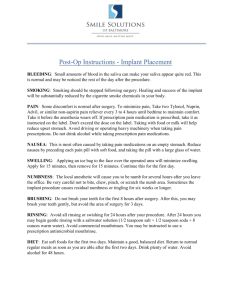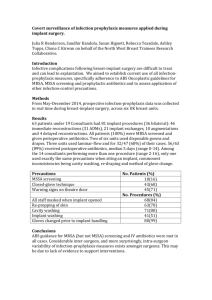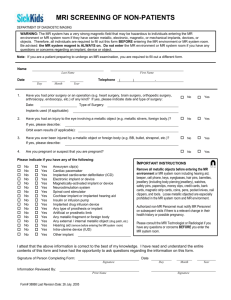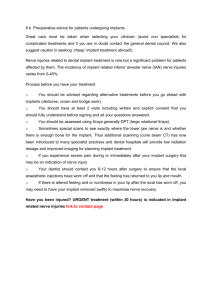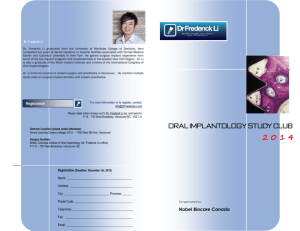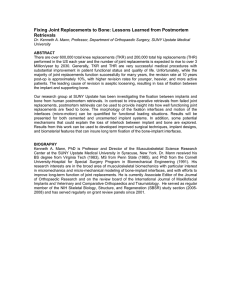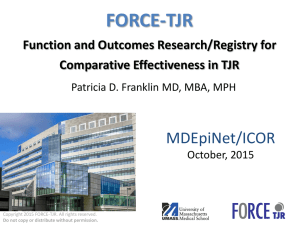The Project - University of Canterbury
advertisement
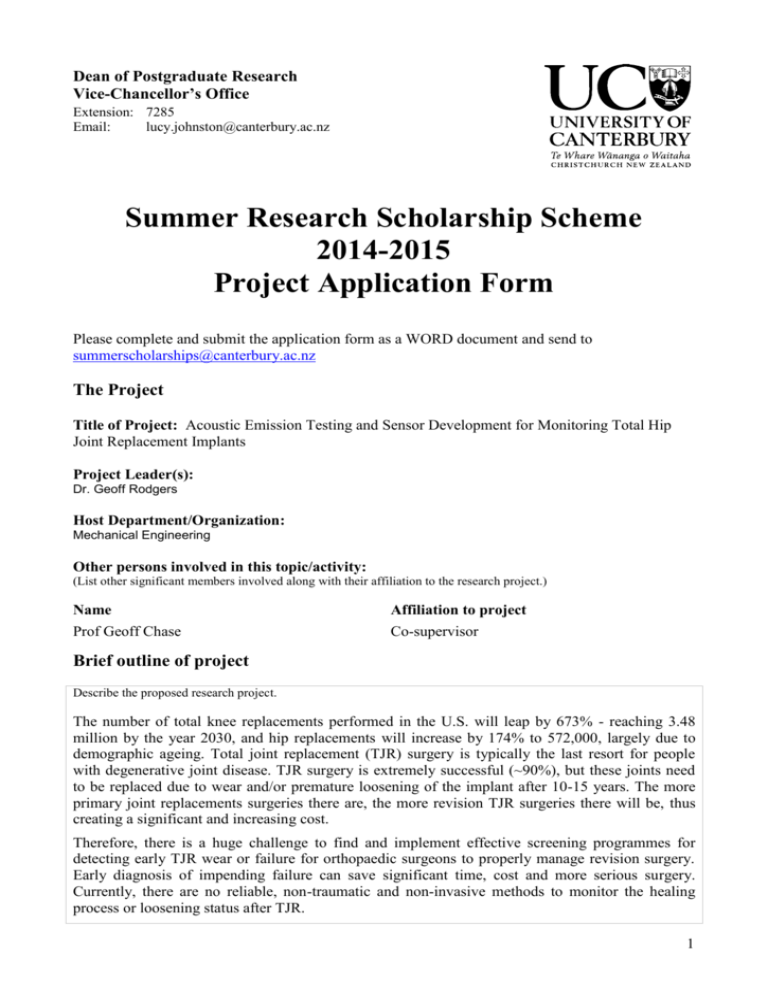
Dean of Postgraduate Research Vice-Chancellor’s Office Extension: 7285 Email: lucy.johnston@canterbury.ac.nz Summer Research Scholarship Scheme 2014-2015 Project Application Form Please complete and submit the application form as a WORD document and send to summerscholarships@canterbury.ac.nz The Project Title of Project: Acoustic Emission Testing and Sensor Development for Monitoring Total Hip Joint Replacement Implants Project Leader(s): Dr. Geoff Rodgers Host Department/Organization: Mechanical Engineering Other persons involved in this topic/activity: (List other significant members involved along with their affiliation to the research project.) Name Affiliation to project Prof Geoff Chase Co-supervisor Brief outline of project Describe the proposed research project. The number of total knee replacements performed in the U.S. will leap by 673% - reaching 3.48 million by the year 2030, and hip replacements will increase by 174% to 572,000, largely due to demographic ageing. Total joint replacement (TJR) surgery is typically the last resort for people with degenerative joint disease. TJR surgery is extremely successful (~90%), but these joints need to be replaced due to wear and/or premature loosening of the implant after 10-15 years. The more primary joint replacements surgeries there are, the more revision TJR surgeries there will be, thus creating a significant and increasing cost. Therefore, there is a huge challenge to find and implement effective screening programmes for detecting early TJR wear or failure for orthopaedic surgeons to properly manage revision surgery. Early diagnosis of impending failure can save significant time, cost and more serious surgery. Currently, there are no reliable, non-traumatic and non-invasive methods to monitor the healing process or loosening status after TJR. 1 Our group is investigating acoustic emission (AE) monitoring as a method to provide insight into implant condition and provide early detection of wear and loosening. We are developing the AE concept for use as a diagnostic tool to assess implant designs and materials. The project will involve the design and testing of a set-up to record implant vibrations of an in-vitro (outside the body) joint replacement implant and evaluation of the results. The project will involve analysis of a large set of in-vitro and in-vivo data to identify trends and relate observations to clinical outcomes. The project will also involve patient testing in a clinical environment at the Canterbury Orthopaedic and Bone Research Association (COBRA) unit at Burwood Hospital. 0.5 Voltage (V) 0.4 0.3 0.2 0.1 0 1 2 3 4 time (s) 5 6 7 8 Joint Replacement Implant Power Spectrum 50 40 30 20 10 0 0 5 10 15 20 25 Frequency (kHz) Recorded output signal from clinical trials If the project involves work away from the University campus (e.g., at fieldwork sites) please detail all locations. Testing may be undertaken at Christchurch and/or Burwood Hospitals If the student be required to work outside of normal university hours (8am-5pm) please provide details No unusual hours required. Benefits student will gain from involvement in the project Describe the research experience and skills that the student will acquire through involvement in this research project – maximum of 100 words. Benefits to the student in completing this project include: Practical experience in applied sensor technology and experimental methods An understanding of electronics and mechatronic systems Practical experience in data handling, signal processing and analysis techniques in both timedomain and frequency domain Experience with applications of medical device design. Interaction with medical researchers and orthopaedic surgeons This studentship would provide skills to a successful student interested in completing a Masters or PhD degree in Mechanical Engineering and/or Bioengineering. 2 Specific student requirements Please provide details of all requirements you have for the student to work on this project – for example, if specific courses/experience are necessary. This project is intended for a 2nd or 3rd Pro Mech Eng/Mechatronics student. Specific areas of interest the student would have are: An interest in applying engineering problem solving to experimental methods An interest in data analysis and signal processing A good working knowledge of Matlab is preferable but not essential An interest in bioengineering 3



